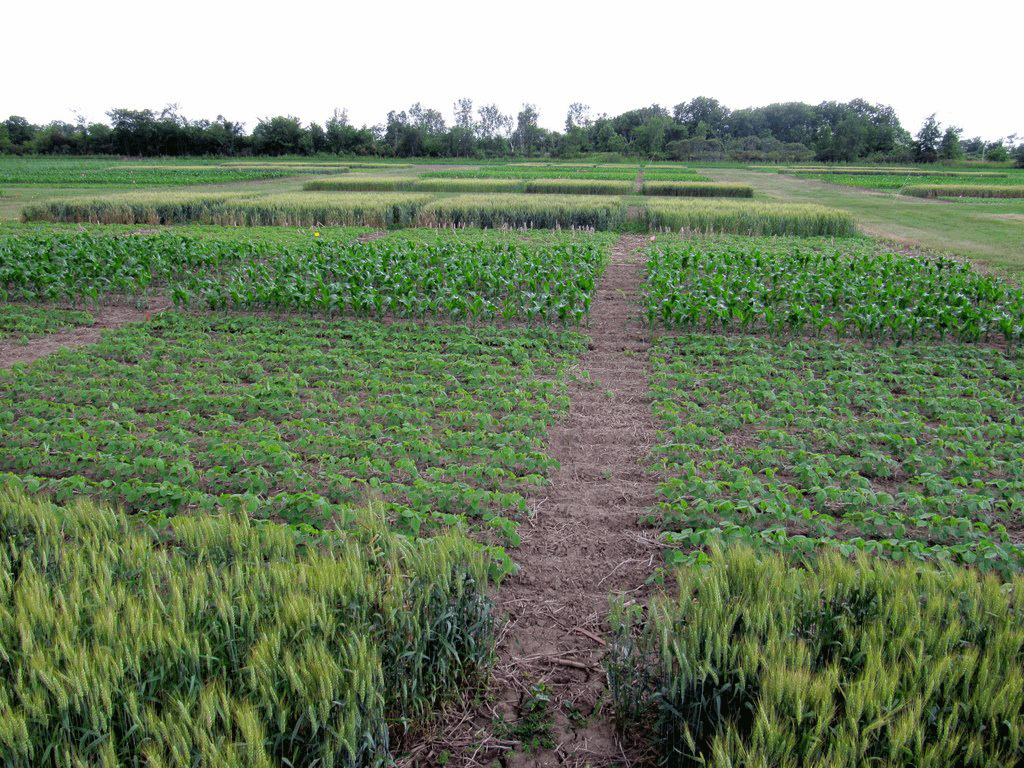Careful Rotation
HOW TO MAKE THE BEST DECISIONS WITH BOTH AGRONOMICS AND ECONOMICS IN MIND
choosing the right rotation – or even deciding to break rotation – can be a difficult decision for growers, who must balance both economic and agronomic factors. It’s never a simple or easy choice.
In terms of strictly crop and input prices, it’s instructive to look at what happened in 2009 before looking at whether corn, soybean and wheat will give the best return in 2010. “Corn is usually the most profitable crop per acre in Ontario,” says Seamus Hoban, an economist at Grain Farmers of Ontario. “However in 2009, soybeans produced better net returns in some areas.”
Corn suffered a short growing season and difficult harvest, notes Hoban, while soybean prices rallied in response to strong export demand. Ontario like the rest of the world produced more than enough wheat to satisfy demand, notes Hoban, and quality issues further discounted prices in some cases.
In terms of input costs, he says that low fertilizer prices will again produce good profit margins for corn. The 2010 OMAFRA Field Crop Budgets estimate total operational expenses for corn at $423 per acre (minimum-till), soybeans $261 per acre and winter wheat $234 per acre (both no-till).

As the global economy continues to recover, demand for commodities will rise in 2010, predicts Hoban. While this will place long-term upward pressure on the price of inputs such as fertilizer, he believes that “fertilizer costs will likely remain subdued in 2010, as there are ample stocks available and commodity prices will be constrained.”
In terms of what will be most profitable in 2010, Hoban sees corn as the winner. “Supplies are expected to be reasonably tight. The market is banking on a significant switch in acres from soybeans and wheat to corn,” he says. “However, with considerable corn still in the ground and the possibility of a late planting season (a high risk of spring flooding), supplies could become extremely tight – and low input costs provide added incentive.”
Soybeans rank second. “The expected bumper crop in South America is starting to materialize and therefore growers can’t expect 2009 prices,” Hoban notes. “But continued growth in demand – particularly from China – should avoid a significant oversupply situation.”
Wheat ending stocks will remain at record highs in 2010 in Hoban’s view. “Eastern Europe and particularly Russia have increased their output and also improved quality, which has been undercutting North American product on the export markets,” Hoban says. Ontario wheat production will drop substantially in 2010, with just 750,000 acres of winter wheat planted. “In recent years, producers have been growing more soft red winter wheat,” he adds, “and as a result, producers with soft white winter and hard red winter varieties have enjoyed strong basis gains.”
agronomic considerations
From the agronomic perspective however, just because corn is expected to produce the highest return in 2010, Dr. Dave Hooker does not recommend breaking your rotation to plant more of it. “The risks of using a short rotation are many,” says Hooker, a professor and field crop agronomist at the University of Guelph Ridgetown Campus. “One change in a crop rotation can impact the performance of all crops in the rotation – the decision needs to consider the impact on the entire system.”
While the beneficial effects of crop rotations depend mainly on the crops involved and how they are managed through the use of tillage and cover crops, Hooker says they generally include a reduction of pest populations and soil erosion, boosted soil quality, and more flexibility and timelines in crop management.
Long-term (15 year) rotational studies at Ridgetown clearly demonstrate the importance of including wheat in the rotation, which is something some growers are not convinced of. “In 2009, at optimal nitrogen levels, we found that corn in the long-term corn-soybean-wheat (C-S-W) rotation yielded at least 1.70 tonnes per hectare (27 bushels per acre) more than corn in the corn-soybean or corn-corn rotations under conventional tillage,” says Hooker.
The lowest soybean yields in the study were, not surprisingly, produced in the soybean-soybean rotation treatment. “Yields increased with soybean grown after corn by 0.56 tonnes per hectare (eight bushels per acre) compared to the continuous soybean plots, and were higher again by about 0.35 tonnes per hectare (five to six bushels per acre) in C-S-W,” notes Hooker. “Additionally, average wheat yields were 0.30 tonnes per hectare (five bushels per acre) higher in the C-S-W rotations compared to the S-W rotation.”
While the observed yield responses are at least partly due to a combination of known factors that come with rotation, Hooker says that in most rotation studies, yield increases go beyond what can be explained by these factors – a phenomenon called ‘the rotation effect’.
In terms of advice for those contemplating a change in crop rotation, Hooker advises considering both the impact on other crops and long-term consequences. “You need to ask yourself a number of questions, such as how the change will likely impact the yields of other crops in future years,” he says. “Also ask yourself how the change will affect the timeliness of planting and harvest of other crops, and how many more resources you will likely need to spend on managing pests such as difficult weeds, diseases, or insects.”
Hooker also advises considering the impact of a missed opportunity for nitrogen fixation if you are dropping the opportunity to include red clover with no wheat in the rotation and how these changes will affect other soil quality factors such as structure and organic matter. “Remember the entire system,”
he concludes. •






















